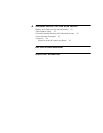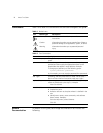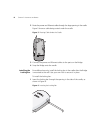6 CHAPTER 1: INTRODUCTION
Wireless Network
Standards
Understanding the characteristics of the 802.11a and 802.11g standards
can help you
make the best choice for your wireless implementation plans.
802.11a
Ratified in 2002, 802.11a is IEEE’s more recent wireless standard. It
operates at the 5
GHz band and supports data rates at up to 54 Mbps.
Because there are fewer devices in the 5 GHz band, there’s less potential for
RF interference. However, because it is at an entirely different radio
spectrum, it is not compatible with 802.11g.
The higher spectrum provides about 50 m (164 ft) of coverage—about
half
what 802.11g offers.
Consider 802.11a when you need high throughput in a confined space
and you are:
■ Running high-bandwidth applications like voice, video, or multimedia
over a wireless network that can benefit from a five-fold increase in
data throughput.
■ Transferring large files like computer-aided design files, preprint
publishing documents or graphics files, such as MRI scans for medical
applications, that demand additional bandwidth.
■ Supporting a dense user base confined to a small coverage area.
Because 802.11a has a greater number of non-overlapping channels,
you can pack more wireless devices in a tighter space.
802.11g
802.11g operates in the 2.4 GHz band at up to 54 Mbps. Ratified in
2003, it supports
the widest coverage—up to 100 m (328 ft). However, is
subject to a greater risk of radio interference because it operates in the more
popular 2.4 GHz band.
802.11b operates at up to 11 Mbps and supports coverage up to 100 m
(328 ft).


















